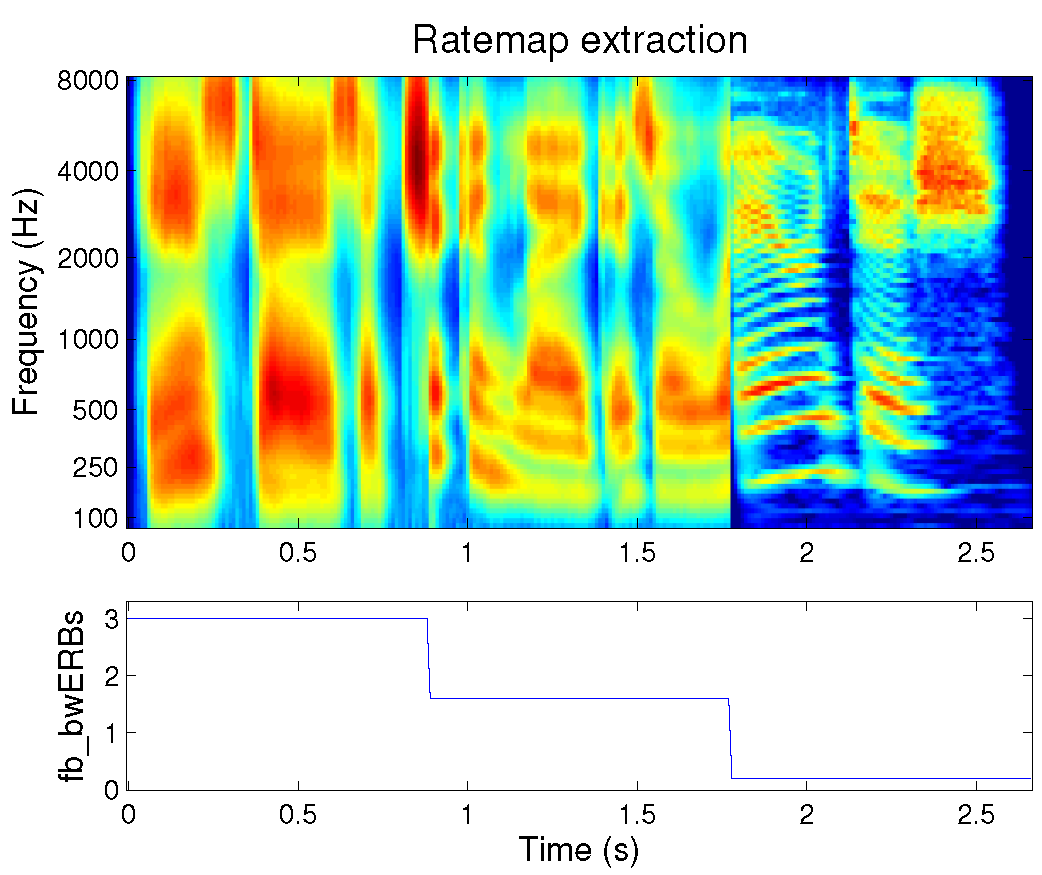Feedback inclusion¶
A key concept of the Auditory front-end is its ability to respond to feedback from the user or from external, higher stage models. Conceptually, feedback at the stage of auditory feature extraction is realised by allowing changes in parameters and/or changes in which features are extracted at run time, i.e., in between two chunks of input signal in a chunk-based processing scenario.
In practice, three types of feedback can be identified: - A new request is placed - One or more parameters of an existing request is changed - A processor has become obsolete and is deleted
Placing a new request¶
Placing a new request at run time, i.e., online, is done exactly is it is done
offline, by calling the
.addProcessor method of an existing manager instance.
Modifying a processor parameter¶
Warning
Some parameters are blacklisted for modifications as they would imply a change in dimension in the output signal of the processor. If you need to perform this change anyway, consider placing a new request instead of modifying an existing one.
Modifying a processor parameter can be done by calling the modifyParameter
method of that processor in between two calls to the processChunk of the
manager instance.
Fig. 15 illustrates feedback capability of the Auditory front-end.
This is a rate-map representation of a speech signal that is extracted online.
The bandwidth of auditory filters, controlled by the parameter fb_bwERBs in
the original request was set to 3 ERBs, an abnormally large value in
comparison to a normal-hearing frequency selectivity. Throughout the
processing, the bandwidth is reduced to 1.5 ERBs by calling:
mObj.Processors{2}.modifyParameter('fb_bwERBs',1.5);
in between two calls to the processChunk method of the manager mObj, at
around 0.9s. Here, mObj.Processors{2} points to the auditory filterbank
processor, an instance of a gammatone processor. The bandwidth is later (at
1.75s) reduced even further (to about 0.25). Fig. 15
illustrates how narrower auditory filters will reveal the harmonic structure of
speech.
Note
If a processor is modified in response to feedback, subsequent processors need to reset themselves, in order not to carry on incorrect internal states. This is done automatically inside the framework. For example, in the figure above, internal filters of the inner hair-cell envelope extraction and the ratemap computation are reset accordingly when the bandwidth parameter is changed
Deleting a processor¶
Deleting a processor is simply done by calling its remove method. Like for
parameter modifications, this affects subsequent processors, as they will also
become obsolete. Hence they will also be automatically deleted.
Deleting processors will leave empty entries in the manager.Processors cell
array. To clean up the list of processor, call the cleanup() method of your
manager instance.
